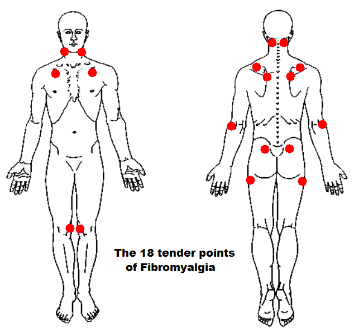The Types of Fibromyalgia
Do you know the different types of fibromyalgia? Which one do you suffer with?
What many people don’t know is there are different types of fibromyalgia. Those who suffer from fibromyalgia know the daily pain from this seemingly invisible chronic illness. They understand that life is a lot different for them than for those who don’t suffer. Here is a brief description of each:
There are two primary (parent) types of fibromyalgia that have been discovered. The first is called rheumatic conditions and the second is called myofascial pain syndrome. From these two types of fibromyalgia, everything else is a derivative.

- Rheumatic conditions are those characterized by inflammation and reduced function of connecting or supporting structures. This would include things such as all the joints, tendons, ligaments, bones and muscles throughout the body. Symptoms would generally include overall or localized body stiffness, pain and swelling. Some of the more common rheumatic conditions that most people would recognize would include osteoporosis, rheumatoid arthritis, lupus, gout and vasculitis.
- Myofascial pain syndrome is characterized as a chronic form of muscle pain. Myofascial pain syndrome will center itself around sensitive points in your muscles all over your body and are called trigger points. These trigger points in your muscles can be painful when touched and the pain can spread throughout the affected muscle.
Fibromyalgia is generally treated as one singular disease where these two seperate conditions are observed. The rheumatic condition, the most ocommon of the two conditions, can quite often become quite severe and affect a person quite severely. In some cases, this condition may potentially lead to other diagnosed conditions like rheumatoid arthritis, hypothyroidism, lupus, HIV and in very rare cases, even cancer. In the most common form, fibromyalgia is a common type of rheumatologic disease, which is found mostly in women rather than in men.
There are times when fibromyalgia is characterized and diagnosed as primary and secondary:
- Primary fibromyalgia is the most commonly accepted form of fibromyalgia. This form ss normally diagnosed when no other underlying rheumatologic disease, such as arthritis or lupus, is present, and at least 11 of 18 designated tender points are confirmed. Your specialist who diagnoses fibromyalgia will recognize those tender points and they’re not something a layperson can generally recognize. Other types of fibromyalgia that have been identified include:
- Concomitant fibromyalgia: this occurs with along with seemingly unrelated conditions such as osteoarthritis or scoliosis;
- Secondary or reactive fibromyalgia: this is thought to occur as a result of the onset of another known disease or injury.
- Secondary fibromyalgia has been thought to be triggered by other conditions such as rheumatoid arthritis, lupus, hypothyroidism, HIV or cancer. Secondary fibro has also been thought to be triggered by some additional trauma to the body, such as after a car accident or work injury. Secondary fibromyalgia is sometimes referred to as post-traumatic fibromyalgia because some specialists think that this form may remain confined to the injury site. The doctors refer to this as “regional fibromyalgia”. It may be present in patients who experience pain at fewer than 11 of 18 positive tender points.
To learn more about the different types of fibromyalgia, please visit these websites: National Fibromyalgia Association, National Fibromyalgia Partnership, Inc. (NFP), National Fibromyalgia Research Association (NFRA)
Which of these types of fibromyalgia do you suffer from? Leave a few comments below and perhaps others can relate or benefit from your insight or experience.




1 Response
[…] deplete your energy level contributing to the fatigue commonly suffered by those with fibromyalgia. Fibromyalgia sufferers tend to have a lower activity level than average, and should therefore be especially careful to […]